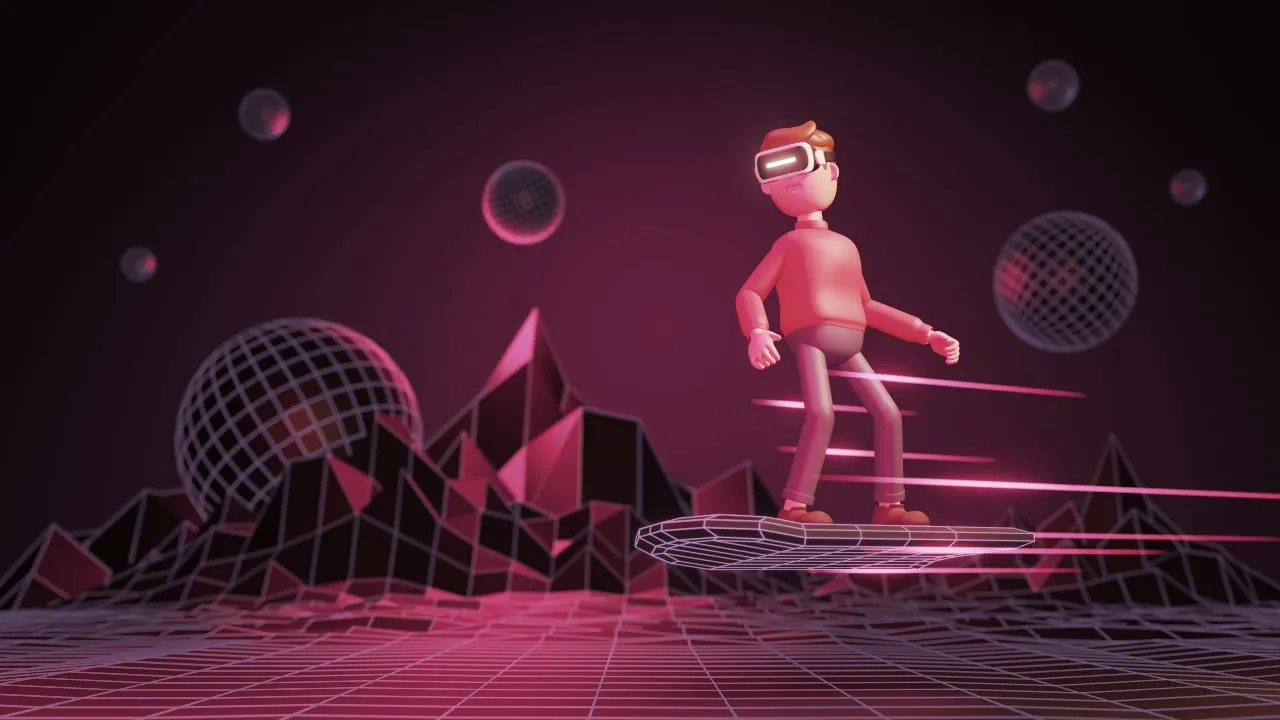In brief
- Brian Trunzo, Polygon Studios’ metaverse lead, spoke with Decrypt at Chainlink SmartCon 2022.
- He discussed future use cases for NFTs and Web3 technology, including how they’ll gain acceptance from gamers.
In the early years of the NFT space thus far, it’s been profile pictures and artwork that have yielded top-dollar sales and consistently dominated headlines. But as the market evolves and the immersive future internet of the metaverse takes shape, will tokenized images continue to be the most prominent use case for NFTs?
Brian Trunzo, metaverse lead at Polygon Studios, doesn’t think so. In an interview at the Chainlink SmartCon 2022 conference, he told Decrypt’s Dan Roberts and Stacy Elliott that the crypto industry will have achieved mainstream adoption of Web3 technology, NFTs, and the metaverse when “we stop saying it”—when those terms are no longer necessary.
Trunzo believes that skeptics of the technology are informed by a limited understanding of Web3 and suggests that a wider set of NFT use cases will take hold in the future. “It's because their understanding of it is that which the mainstream media reports to be right-click-save JPEGs, an investable asset class—which is not the future of Web3 and NFTs, in my mind,” he explained.
An NFT is a blockchain token that can serve as a proof of ownership for an item. It can represent digital things like profile pictures, artwork, and collectibles, but also interactive video game items, customer engagement rewards, real estate deeds, and more.
Polygon Studios works with creators and companies that are building on Polygon, a sidechain scaling network for Ethereum, the leading blockchain for NFTs and decentralized apps. In his role as metaverse lead, Trunzo and his team help pave the way for technology to support immersive applications and NFT-powered experiences from various creators.
He pointed to Starbucks’ recent NFT announcement as an example of how he sees the assets being used as a technology layer rather than an asset class itself. Starbucks will use Polygon to give away NFT stamps to customers, as well as sell premium NFTs, all of which can earn customers real-world perks and experiences.
“If Web2 was measured in engagement, [then] Web3 will be measured in gamification—brand immersion,” he explained.
In the case of Starbucks, it won’t be a game-like 3D metaverse akin to Decentraland or The Sandbox, but the NFT-powered program is designed to engage users across digital and physical spaces alike.
That sort of Web3 gamification is one of the biggest opportunities he sees in the space, along with digital fashion. Trunzo, who previously co-founded real-world menswear brands, said that metaverse fashion will tap into users’ need not only for self-expression, but also vanity and a desire to showcase virtual “flexes.”
And when it comes to true video game experiences, Trunzo is unsurprisingly on the side of the debate that sees NFTs as a prospective benefit. Many gamers aren’t thrilled about NFTs, in part because of scams and speculation but also a widespread belief that creators and publishers will use them to extract even more value from players.
Even with that stigma out there, Trunzo expects a “genie out of the bottle moment” in which more and more players embrace the benefits of using NFTs in games. In his view, the ability for players to truly own their progress and unlocked benefits as NFT assets—which can then be sold or perhaps even across in other games—will be a real plus.
But he doesn’t expect that all future video games will use NFTs when that happens. Some games may live entirely on-chain, some may not see a need for NFTs, and others could land somewhere in between with modest or limited Web3 functionality.
“We’re not trying to cram it down people’s throats that you have to incorporate NFTs into your game,” Trunzo said.
In the meantime, some early metaverse games have been criticized for underwhelming graphics compared to the traditional game industry’s top titles. Trunzo acknowledged that Web3 gaming is early, but also said that games don’t necessarily need hyper-realistic graphics to look beautiful and stand the test of time.
Trunzo pointed to “timeless IP” like popular Nintendo games, including 2002’s GameCube favorite The Legend of Zelda: The Wind Waker—a title that bucked trends by adopting a cel-shaded cartoonish look rather than hyper-realistic design. Twenty years later, it’s arguably held up better than many games from that era. “You play it today and it’s gorgeous,” he said.
Will the same be said for Decentraland, for example, in 20 years? Trunzo believes that Web3 games will ultimately come in all shapes and sizes—with some adopting higher-end graphics and others opting for simpler or lo-fi aesthetics. “I think there will be something for everyone,” he said.





